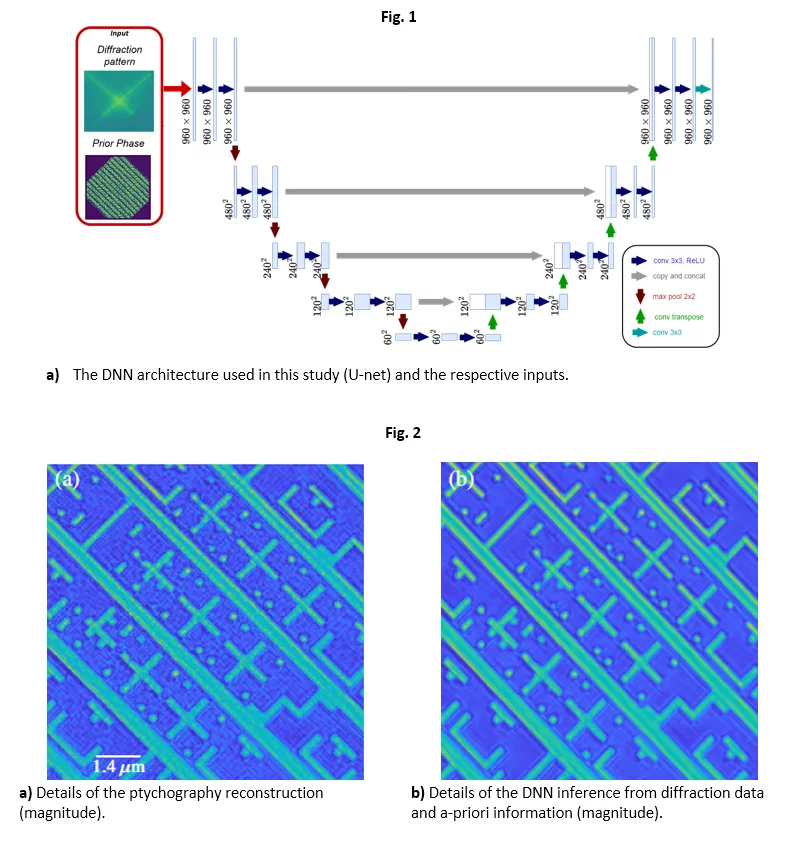In this study, we explore and demonstrate a rapid method for actinic patterned EUV mask inspection based on a deep neural network (DNN) architecture which exploits a-priori information of the photomask sample. We aim to achieve fast, high-quality image reconstruction of an EUV mask by using comparatively few diffraction patterns in a formalism consistent with the ptychography approach.
We tested our prior-primed DNN method on both synthetic and experimental data, demonstrating that the sample can be reconstructed fast and with high fidelity, allowing us to map out the mask defects down to a size of about 40 nm.
Extreme ultraviolet (EUV) mask metrology and inspection is crucial to evaluate the quality of devices realized by EUV lithography and to obtain the required yield. Actinic (i.e., at wavelength λ = 13.5 nm) mask inspection is particularly essential, as this wavelength ensures an imaging resolution and overall imaging physics that matches the operative condition of the lithography scanner. In recent years, various groups have explored coherent diffractive imaging (CDI), and particularly ptychography, as a candidate method for actinic EUV mask inspection. The simplicity of the ptychography approach, the absence of expensive lenses, and the possibility to image both amplitude and phase structures make this method particularly appealing. Despite these advantages, ptychography suffers from throughput limitations dictated by both the long data acquisition process and the time–demanding phase retrieval step. While the former challenge can be mitigated by advancements on source brilliance and detector technology, the latter clearly demands improvements on the algorithmic front. In this paper, we present our recent results on the study of deep learning to achieve fast, high quality, and phase-sensitive reconstruction of aerial images of EUV masks, given the acquired data and the abundant a–priori information on the geometrical layout and chemical composition of the samples. We show that, once trained, the selected Deep Neural Network (DNN) architecture achieves a much faster reconstruction of the sample compared to the standard ptychography approach, while retaining high quality in both magnitude and phase images of the object.
Contact
Dr. Paolo Ansuinelli
Paul Scherrer Institut
Forschungsstrasse 11
5232 Villigen PSI
+41 56 310 39 55
paolo.ansuinelli@psi.ch

